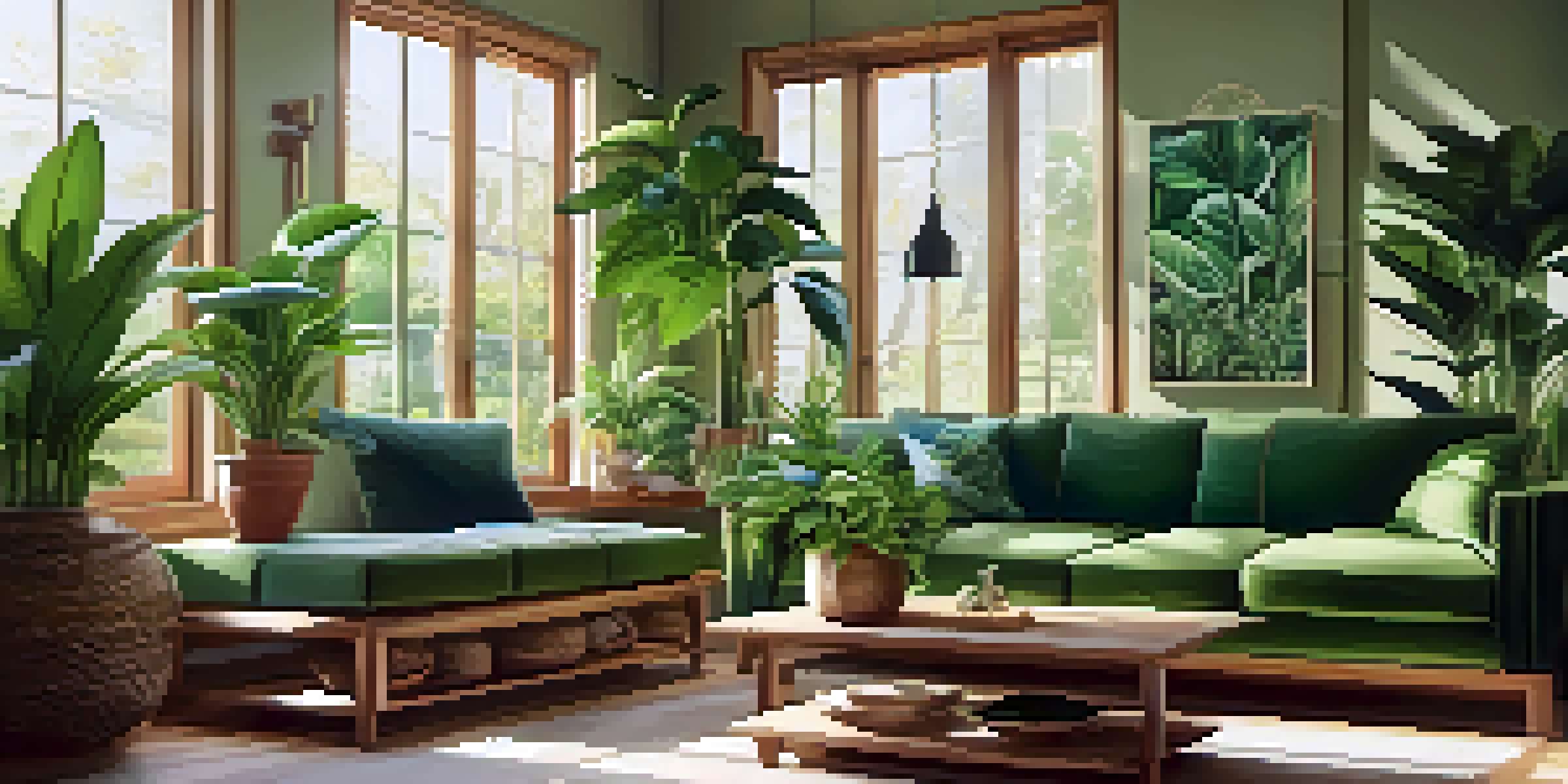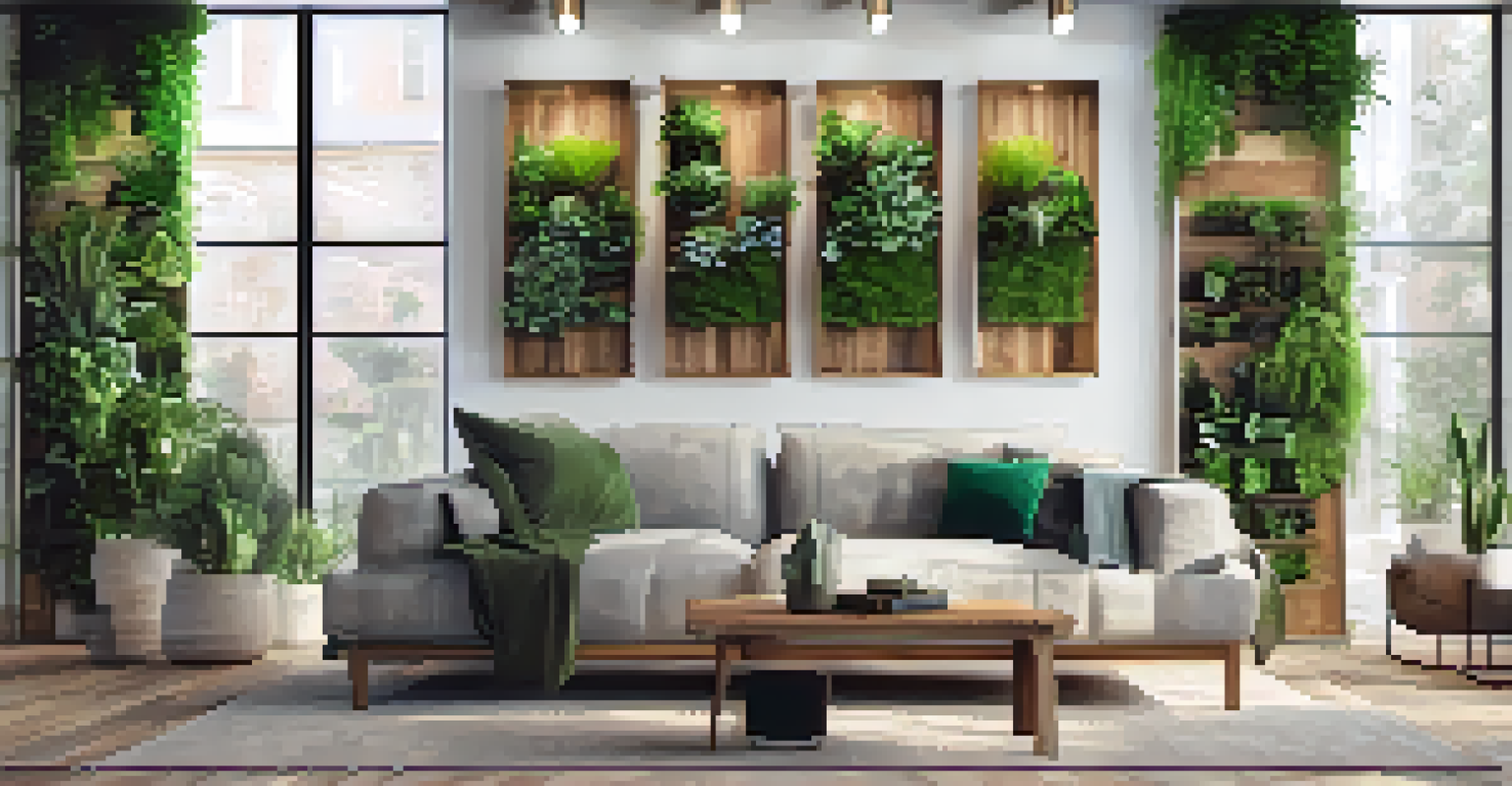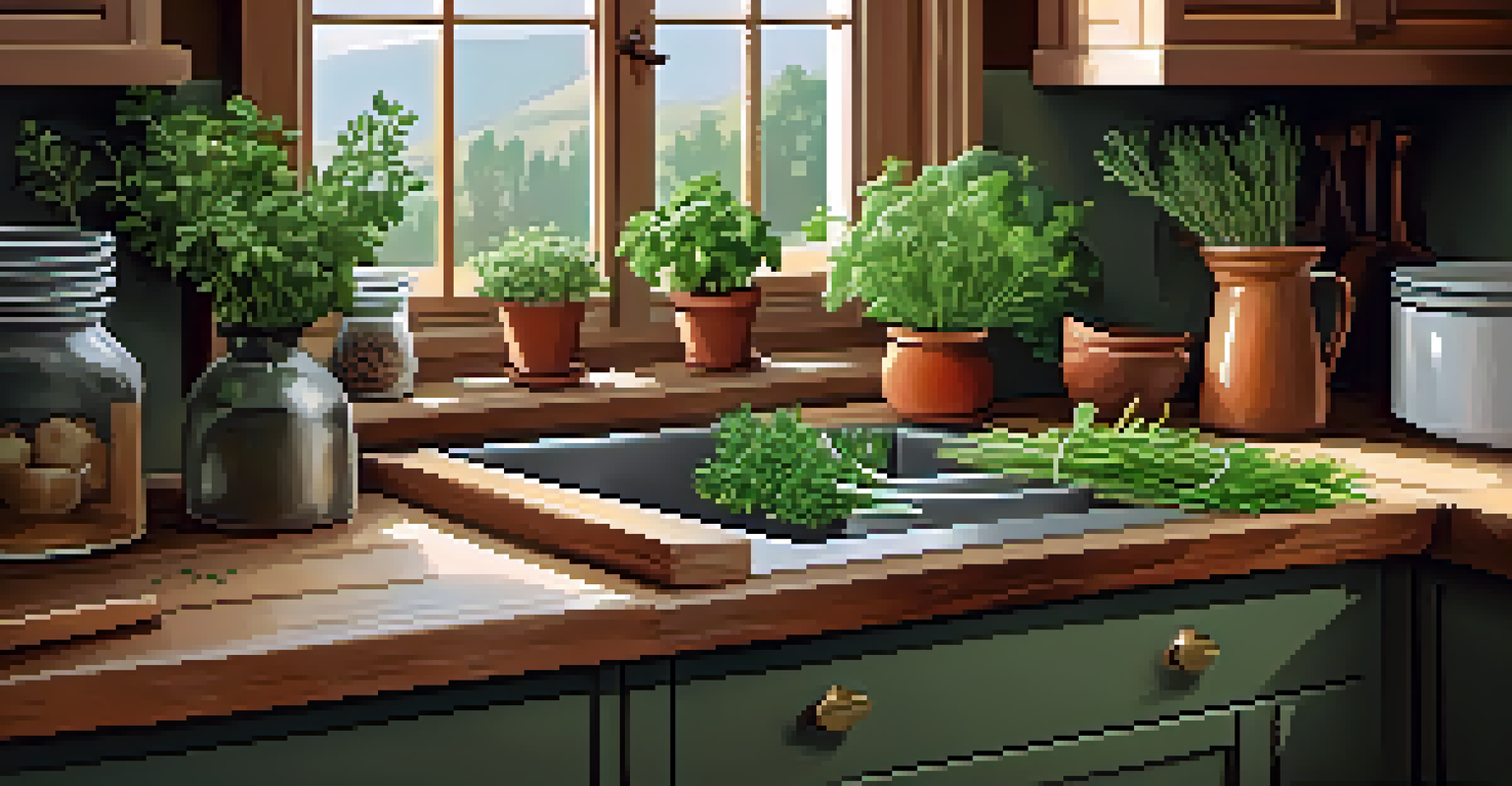Sustainable Home Design: Incorporating Eco-Friendly Plants

The Importance of Sustainable Home Design
Sustainable home design focuses on creating spaces that are environmentally responsible and resource-efficient. By incorporating eco-friendly practices, homeowners can significantly reduce their carbon footprint. This approach not only benefits the planet but also enhances the quality of life for occupants, creating healthier living environments.
The best time to plant a tree was twenty years ago. The second best time is now.
One of the most impactful ways to promote sustainability at home is through the use of natural materials and energy-efficient systems. However, integrating eco-friendly plants into your design can further enhance these benefits. Plants improve air quality, provide natural insulation, and even boost your mood—making them a vital part of any sustainable home.
Embracing sustainable design means thinking holistically about how your home interacts with the environment. By choosing the right plants, you're not just beautifying your space; you're also making a statement about your commitment to eco-conscious living.
Choosing the Right Eco-Friendly Plants
When selecting plants for your sustainable home, consider native species that thrive in your local climate. Native plants require less water and maintenance, making them an ideal choice for eco-friendly gardening. Additionally, these plants support local wildlife, such as birds and pollinators, which is essential for maintaining biodiversity.

Another great option is indoor plants that improve air quality, like snake plants or peace lilies. These plants are not only low-maintenance but also help filter indoor air pollutants, creating a healthier home environment. The right indoor plants can also add a pop of color and life to your interior design.
Sustainable Design Enhances Life
Incorporating eco-friendly practices in home design not only reduces carbon footprints but also fosters healthier living environments.
Lastly, consider incorporating edible plants into your home. Herbs, vegetables, and fruit-bearing plants not only contribute to a sustainable lifestyle but can also reduce your grocery bills. Imagine stepping into your kitchen and snipping fresh basil or enjoying a homegrown tomato—what a rewarding experience!
Creating a Plant-Friendly Layout
Designing your home with plants in mind starts with considering their placement. Think about how each room can benefit from greenery and how much natural light it receives. For instance, placing sun-loving plants near windows can help them thrive, while low-light plants can be tucked into corners that don’t get much sunlight.
Nature does not hurry, yet everything is accomplished.
Vertical gardening is another clever way to maximize space and incorporate plants into your design. Wall-mounted planters or living walls can create stunning focal points and save floor space, making them perfect for smaller homes or apartments. Plus, they can serve as excellent natural air filters.
Remember to also consider accessibility when arranging your plants. Make sure that plants within reach are easy to care for, such as those that require regular watering or pruning. A well-thought-out layout will not only keep your plants healthy but also encourage you to interact with them regularly.
Incorporating Plants into Interior Design
Plants can seamlessly blend into your interior design, acting as both decor and natural air purifiers. Consider using planters that match your home’s aesthetic—whether it’s modern, rustic, or bohemian. Unique pots can serve as conversation starters while enhancing the overall vibe of your living space.
Layering different heights and textures of plants can create visual interest in any room. Combine tall floor plants with smaller tabletop varieties to add depth to your design. This creates a lush and inviting atmosphere that encourages relaxation and connection with nature.
Choose Native and Edible Plants
Selecting native species and edible plants promotes biodiversity and contributes to a sustainable lifestyle while also offering aesthetic and practical benefits.
Don't forget to experiment with plant arrangements. Grouping plants together can create a mini indoor garden effect. This not only makes for a stunning visual display but also allows you to create microenvironments that cater to the specific needs of different plant species.
Sustainable Gardening Practices
Engaging in sustainable gardening practices is essential for maintaining healthy plants and protecting the environment. Start by using organic fertilizers and pest control methods to reduce chemical exposure. Composting kitchen scraps can also provide a nutrient-rich soil amendment that supports plant growth.
Water conservation is another critical aspect of sustainable gardening. Consider incorporating rain barrels to collect rainwater for irrigation, or using drip irrigation systems that deliver water directly to the plant’s roots. These methods not only save water but also reduce your water bill.
Additionally, practicing crop rotation and companion planting can enhance soil health and reduce pest issues. By selecting plants that complement each other, you can create a thriving garden ecosystem that requires fewer resources and less intervention.
The Benefits of Indoor Plants
Indoor plants offer numerous benefits beyond aesthetics. They can improve air quality by absorbing toxins and releasing oxygen, which can lead to a healthier living environment. Studies have shown that having plants indoors can reduce stress, boost productivity, and even improve concentration—making them a great addition to home offices.
Moreover, plants can help regulate humidity levels, which is particularly beneficial in dry climates or during winter months when indoor heating can create dry air. Plants release moisture into the air through a process called transpiration, promoting a more comfortable atmosphere.
Effective Plant Care is Key
Understanding plant needs and using natural care methods ensures robust growth and aligns with sustainable living principles.
Finally, indoor plants can serve as a natural sound barrier. Strategically placing larger plants can help absorb noise, creating a quieter, more serene space. This makes them an excellent choice for urban dwellings or homes located near busy streets.
Eco-Friendly Plant Care Tips
Caring for eco-friendly plants doesn’t have to be a daunting task. Start by understanding the specific needs of each plant species, including light, water, and soil requirements. This knowledge will help you provide the best care possible and ensure your plants thrive in their environment.
Another tip is to use natural pest control methods when dealing with infestations. Introducing beneficial insects, like ladybugs, or using homemade remedies such as neem oil can effectively manage pests without harming the ecosystem. This way, you keep your plants healthy while minimizing impact on the environment.

Lastly, consider repurposing materials for plant care. Old containers can be transformed into unique planters, while kitchen scraps can serve as compost. Embracing a DIY approach not only saves money but also aligns with the principles of sustainable living.